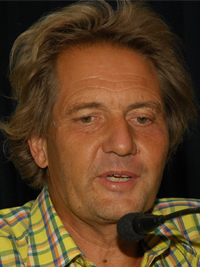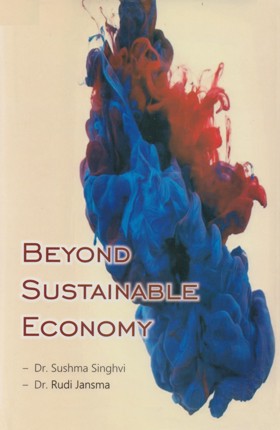Constantin Brancusi, the Romanian pioneer of modernism and patriarch of modern sculpture, was famous for his wise sayings and aphorisms:
My homeland, my family - it is the Earth going round - the breeze blowing, the clouds drifting by, water flowing, a fire warming. Green grass - parched grass - mud, snow.
Our father is the Sun and our mother is the Earth.
When creating, you must merge into the universe, into the elements.
When I work, it is as if an Absolute expresses itself through me.
The greatest happiness is the contact between our essence and the eternal essence.
I am no longer in this world, I am far removed from myself, no longer attached to my person. I am among essential things.
Light is not given to those who cannot see it.
The lowliest and most modest is capable of the journey towards God.
We never achieve God. But the courage to journey is important.
The journey is really within oneself.
The hardest thing is to walk well, fully aware of who you are and the path you're on.
There is an aim in all things. In order to attain it, one must become detached from oneself.
You can't get to the real things if you don't repudiate the I.
Whoever fails to transcend his Self, can neither reach the absolute nor decipher life.
The only wealth we can own is our spirit.
You have to climb very high, to see very far.
- Constantin Brancusi
Constantin Brancusi was born on February 19, 1876 in the hamlet of Hobitza, Gorj county, Romania, to a family of well-to-do peasants. His father died when he was 9 years old and his mother had to provide for three step sons, her own two sons and a daughter. Between 1883 and 1887, Constantin attended classes at the village schools of Pestisani and Bradiceni and also worked as a shepherd in the nearby mountain pastures. At 11 years of age he left the village and got jobs in shops of Targu-Jiu and Craiova. Thanks to his skill in wood carving and the making of a violin out of fruit crates, he was enrolled in 1894 in the Craiova School of Arts and Crafts. He completed the five-year program in four years and graduated in 1898. He attended the courses of the Bucharest School of Fine Arts between 1898 and 1902, acquired academic proficiency and got several awards and a diploma. He fulfilled his military obligations in 1902-1903. His fine Ecorché was exhibited at the Romanian Athenaeum in May 1903. The same year he did the plaster Portrait of General Doctor Carol Davila. In May 1904 he left the country and went to Paris, walking part of the way, according to legend.
He reached Paris in July 1904, worked as a dish washer in a restaurant and as a sexton in the Orthodox church. Grants from the country helped him attend the studio of academic sculptor Antonin Mercié at the Ecole de Beaux Arts, in 1905 and 1906. Between March 24 and April 27, 1907, he attended Auguste Rodin's studio at Meudon, but left it as "Nothing can grow under big trees".
A breakthrough in his career was his turning to direct carving, respect for materials and seeking essentialization. The Kiss, Prayer and Wisdom of the Earth are said to be turning points in his oeuvre. The various versions of Sleeping Muse or Mlle Pogany, the series of Birds, Cocks or Endless Columns represent his attempts at reaching the essential. He used to say: "What is real is not the external form but the essence of things", "It is not birds I sculpt, it is flight."
From the dire poverty of his beginnings, he reached easy circumstances in the end, thanks to his ever increasing fame.
He was widely acclaimed in the United States and well known the world over. However he maintained a simple way of life, to his last days. His Montparnasse studio in Impasse Ronsin was reminiscent of his native peasant home. He died on March 16, 1957 in his studio. He bequeathed all the works in it to the Paris Museum of Modern Art, on condition the studio be reconstructed for the benefit of all peoples.
In his Fatherland, Romania, he left his masterpiece, created in 1937-38, the monumental Ensemble including the Table of Silence, the Gate of the Kiss and the Endless Column.
He admired Indian wisdom and studied Milarepa's writings. The project of a Temple of Meditation, commissioned by the maharajah of Indore in 1936, never came to fruition. Yet, he said that the Birds in space, acquired for that Temple, were "the ones where I most approached the right measure - and I approached this measure to the degree that I was able to rid myself of myself".
 Dr. Rudi Jansma
Dr. Rudi Jansma
 Sorana Georgescu-Gorjan
Sorana Georgescu-Gorjan
